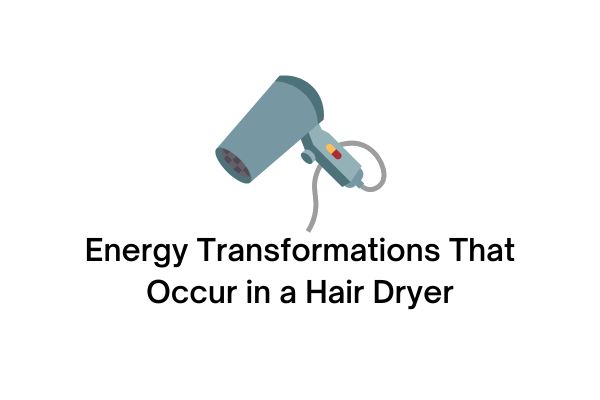Hair dryer or hair dryer is an important tool especially for women that is useful for drying wet hair or after shampooing. This hair dryer also has a polymer that functions as a good thermal and electrical insulator. So what energy changes occur in this hair dryer? The following will discuss the energy changes that occur in a hair dryer.
It should also be noted that by having this tool, it is easier for women to dry their hair immediately. Or maybe there is something that allows using a hair dryer. For those who want to know more about the energy changes that occur in this hair dryer, you can see below:
Daftar Isi
Energy Changes That Occur in a Hair Dryer
The energy in the hair dryer changes, starting from electrical energy which is converted into mechanical energy that drives the fan inside. Then, the energy changes the air to warm.
A hair dryer, a device that transforms electrical energy into heat, is generally used by women to dry their hair. This energy transformation begins when the switch turns on the circuit, giving voltage to the heating element and the electric motor.
The function of the motor is to drive the rotor to rotate the air blades. When the air blades rotate, air is drawn in through the air duct and directed past the heating element. This process causes the air to heat up as it passes over the heating element.
The resulting hot air flow is channeled out through a nozzle to focus on each strand of hair. This nozzle allows the hot air or wind to enter each section of hair, thereby drying it efficiently.
How a Hair Dryer Works
A hair dryer works by using hot air or air generated by an electric heater. Here are the general steps on how a hair dryer works:
- Heating. When you turn on the hair dryer, the heater inside it starts heating the incoming air. Usually, the hot air is generated by a heating element made of metal such as heat-resistant wire.
- Motor. Hair dryers also come with a motor that generates airflow. This motor provides the power needed to drive the fan inside the dryer, which directs the hot air towards the user’s hair.
- Fan. The fan inside the hair dryer is responsible for channeling the hot air in the desired direction, namely the hair. This fan helps spread the hot air evenly around the hair to dry it.
- Temperature and speed settings. Most hair dryers have adjustable temperature and speed settings. The user can choose the heat level and fan speed according to their needs.
- Cover and Filter. Some hair dryers come with a cover and air filter. The hood helps direct the airflow in the desired direction, while the air filter helps keep the hair dryer clean by trapping airborne dust and dirt.
- Heat protection. Some models of hair dryers come with heat protection to prevent the user’s hair from damage due to excessive heat exposure. This can be negative ion technology or a heat protection layer on certain parts of the dryer.
Hair Dryer Safety
After knowing the energy changes and how it works, the following will discuss the safety of hair dryers that you need to know. Here are some other safety features that hair dryers usually have:
- Safety cut-off switch. The scalp is susceptible to high temperatures, with temperatures above 140 degrees Fahrenheit (about 60 degrees Celsius) can cause burns. To prevent the air blown from the hair dryer from reaching this temperature, the hair dryer is equipped with a heat sensor that breaks the circuit and turns off the motor when the temperature rises excessively. Most hair dryers use a bimetallic strip as a cut-off switch.
- Bimetallic strip. Made of two sheets of metal that react differently to temperature. When the temperature inside the hair dryer increases, the strip heats up and bends due to the difference in expansion between the two metals. When it reaches a critical point, the cut-off switch cuts off the electricity to the hair dryer.
- Thermal fuse. To protect against overheating and potential fire, there is often a thermal fuse in the heating element circuit. This fuse will trip if the temperature or electric current exceeds safe limits.
- Insulation. The outside of the hair dryer must be well insulated to prevent burns when touched. The insulating shield that covers the plastic barrel prevents high temperatures from spreading out.
- Protective screen. When air is sucked into the hair dryer by the fan, other objects around it can also be sucked in. To prevent foreign objects from entering the hair dryer, wire mesh covers the air holes on both sides of the dryer. However, dust and lint can often build up, so it needs to be cleaned regularly to keep the air flowing smoothly.
- Front grill. The end of the hair dryer barrel is equipped with a grill to prevent fingers or other objects from entering the dryer tube and being burned by the heating element.
That is an explanation of the energy changes that occur in hair dryers. In the discussion above, there are energy changes, how it works and the safety of hair dryers.
